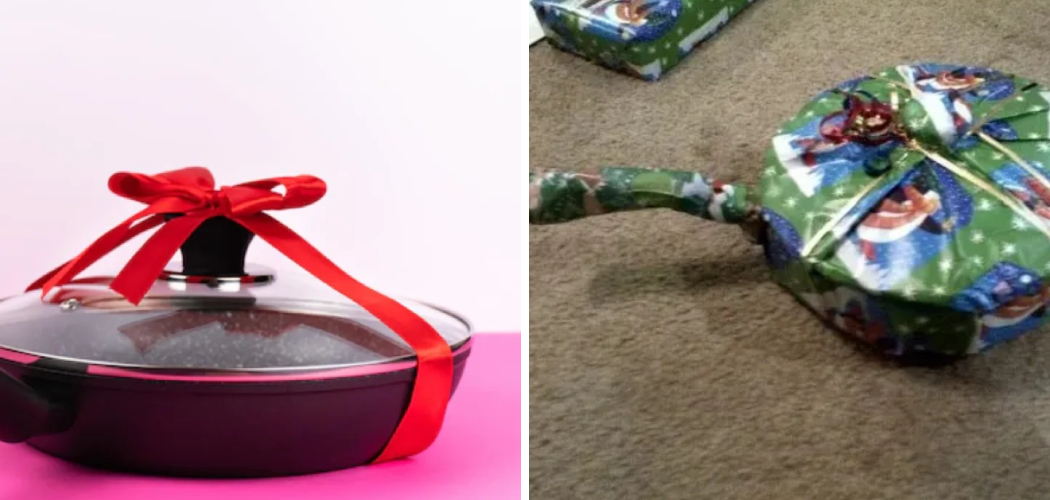Cooking in the kitchen can be a fun and exciting experience, especially for those who love preparing delicious meals for themselves or their loved ones. But, as with all great things, it comes with a price – cleaning up afterward. One of the more tricky things to clean is your frying pan.
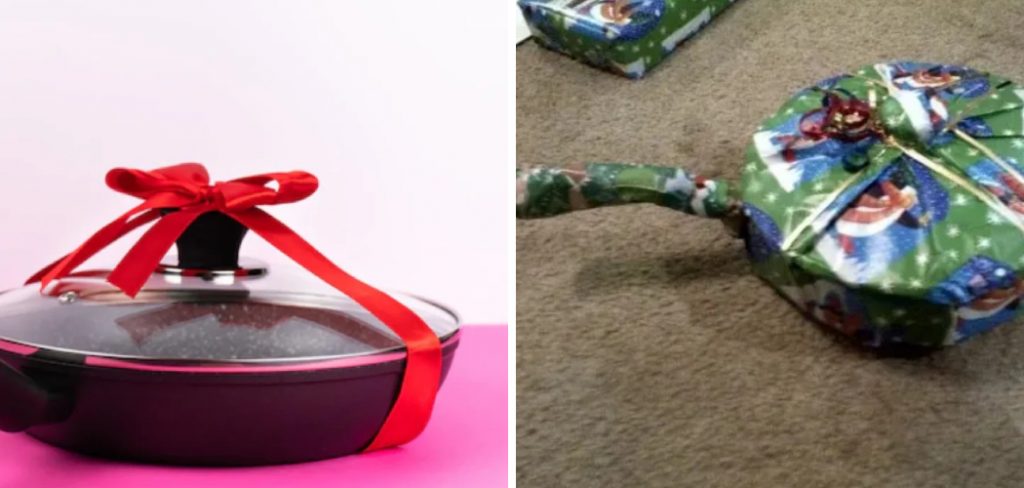
After it’s been scrubbed and dried, you don’t want it to get damaged or scratched in storage. This is where wrapping your frying pan comes in. In this blog post, we’ll go through the steps on how to wrap frying pan for storage, ensuring that it remains in good condition for years to come.
Can You Wrap the Frying Pan?
When it comes to wrapping presents during the holiday season, we tend to think of boxes, bags, and bows. But what about more unconventional items? Have you ever thought about wrapping a frying pan? It might seem like an odd choice, but why not make someone’s day by gifting them a new frying pan with a nice wrapping job?
You could even get creative and add some cooking utensils or ingredients as well. So the next time you’re struggling to find the perfect wrapping for an unusual item, remember that even a frying pan can be wrapped with care and love.
Why Should You Wrap a Frying Pan?
Cooking is your passion; you take pride in every meal you whip up in the kitchen. You make every effort to ensure that your ingredients are fresh and your recipes are spot-on. But are you giving the same amount of attention to your cookware?
A frying pan is the backbone of any kitchen, and if you want it to last long and perform well, you need to wrap it up properly. Wrapping your frying pan with a protective cover or a soft cloth prevents scratches, dents, and other damages caused by improper storage.
It also safeguards the non-stick coating and keeps your pan in pristine condition. So, if you want longevity and performance from your frying pan, it’s time to invest in a good-quality wrap. Trust us; your pan will thank you for it!
How to Wrap Frying Pan for Storage – in 7 Easy Steps
Step 1: Cool Down Before Wrapping
Firstly, ensure your frying pan is fully cooled down before wrapping. If it’s still hot, the plastic wrap or aluminum foil could melt, which could ruin your pan, and that’s not something anyone wants to happen. Removing the excess oil or cooking residue using a paper towel or a clean cloth is also important.
Step 2: Prepare Your Wrapping Materials
Next, prepare your wrapping materials. You can use plastic wrap or aluminum foil, but you may want to use a kitchen towel or a cloth if you want better protection. Whichever material you choose to use, cut a piece that will be large enough to wrap around your frying pan.
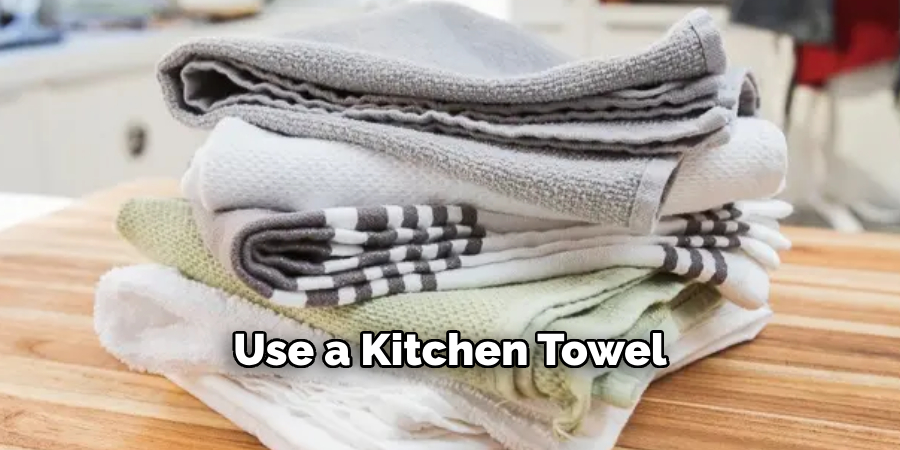
Step 3: Place Your Frying Pan
Once you have your wrapping material ready, place the frying pan in the center of the material. If you are using a piece of cloth, make sure that the handle is placed at the edge of the cloth. You want to ensure the pan’s entire surface is covered and the handle is supported.
Step 4: Wrap the Corners
Bring the corners of the wrap or the cloth together toward the center of the frying pan. If you’re using plastic wrap or aluminum foil, be sure to press the wrap firmly against the frying pan’s surface to create a seal. Make sure to pull the wrap or cloth tightly so that it securely wraps the pan, ensuring that it stays intact during storage.
Step 5: Secure the Handle
For added protection, you may want to wrap the handle of your frying pan. To do this, secure one end of your material around the base of the handle before wrapping it tightly around itself. This will help ensure that the handle doesn’t come loose during storage.
Step 6: Cover with a Cloth
If you want extra protection for your frying pan, you can cover it with a cloth before storing it. This will prevent any dirt or dust from getting inside the wrapping and sticking to the surface of your pan. Make sure that the cloth covers the entire pan before putting it away.
Step 7: Store in a Dry Place
Finally, make sure you store your frying pan in a dry place. Moisture can cause rust and corrosion, so keeping your pan away from damp areas is best. With these steps, your frying pan should stay protected until the next time you use it.
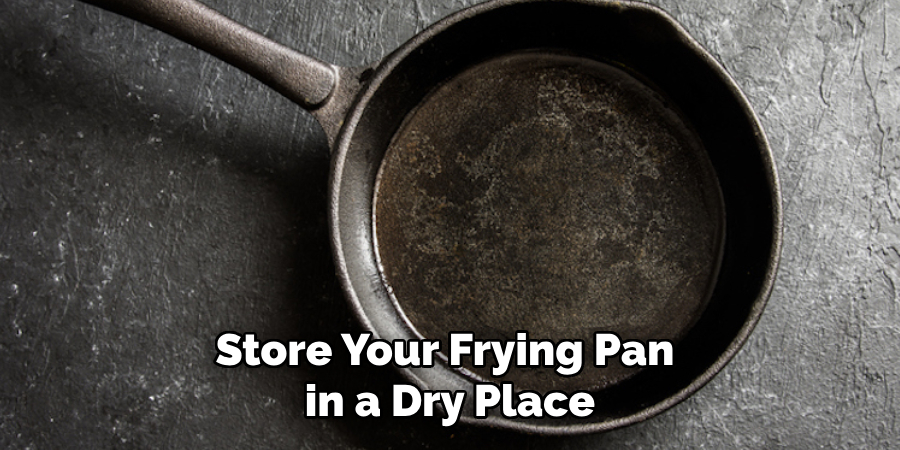
That’s it! You’ve now learned how to wrap frying pan properly. Taking the time to wrap your frying pan correctly will help ensure it stays in great condition for years.
5 Considerations Things When You Need to Wrap Frying Pan
1. The Type of Frying Pan
The first consideration when wrapping a frying pan is the type of frying pan. There are several different types of frying pans, including non-stick, stainless steel, and cast iron. Each type of frying pan has its own benefits and drawbacks, so it is important to choose the right one for your needs.
2. The Size of the Frying Pan
Another consideration when wrapping a frying pan is the size of the frying pan. Frying pans come in a variety of sizes, from small to large. It is important to choose the right size for your needs so that you can cook the food properly.
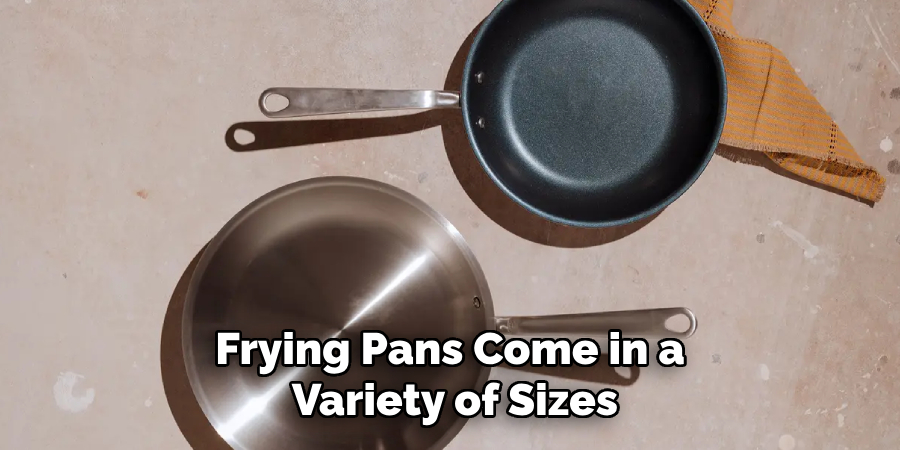
3. The Shape of the Frying Pan
The shape of the frying pan is also a consideration when wrapping it. Several different shapes are available, including round, square, and rectangular. Each shape has its benefits and drawbacks, so choosing the right one for your needs is important.
4. The Material of the Frying Pan
The material of the frying pan is also an important consideration when wrapping a frying pan. Frying pans are made from a variety of materials, including aluminum, cast iron, stainless steel, and copper. Each type of material has its own benefits and drawbacks, so it is important to choose the right one for your needs.
5. The Price of the Frying Pan
The price of the frying pan is also an important consideration when wrapping a frying pan. Frying pans range in price from relatively inexpensive to quite expensive. It is important to choose the right price for your needs so that you can get the best value for your money.
Benefits of Wrap Frying Pan
A wrap frying pan might just be the secret weapon in your kitchen that you didn’t know you needed. This innovative piece of cookware offers numerous benefits that can help you easily streamline your cooking process and produce delicious meals. One of the primary advantages of a wrap frying pan is its versatility.

A unique wrap design allows you to cook a wide variety of dishes, from stews and curries to pancakes and omelets. Additionally, the non-stick surface makes it easy to cook without worrying about food sticking. And with a lid that doubles as a splatter screen, you can ensure your kitchen stays clean while preparing your meals! Overall, a wrap frying pan is a must-have for any serious home chef looking to upgrade their cookware game.
Some Common Mistakes People Make When Trying to Wrap Frying Pan
Have you ever found yourself struggling to wrap a frying pan? You’re not alone. Whether you’re packing for a move or just storing your cookware away, wrapping a frying pan may seem like a simple task, but it can be surprisingly tricky.
One of the most common mistakes people make when trying to wrap a frying pan is not using enough padding. Without enough padding, your pan is at risk of getting scratched or dented during transport or storage.
Another mistake is not properly securing the wrapping material. If the material comes loose, your frying pan could become exposed and vulnerable to damage. By wrapping your frying pans properly, you can ensure they stay in great condition for years to come.
How Often Should You Replace the Cookware Wraps on Your Fry Pans?
Cooking is a wonderful activity that can bring joy and satisfaction to those who enjoy it. However, just like anything else in life, the tools that we use in the kitchen tend to show wear and tear over time.
One of the most important tools in any kitchen is the frying pan, and it’s important to know how often you should replace its cookware wraps. It depends on how frequently you use it and how well you take care of it.
However, a good rule of thumb is to replace the wrap every six months to a year. This will ensure that you always have a clean and efficient cooking surface, which will make your meal preparations a breeze!
Conclusion
In conclusion, wrapping your frying pans for storage is necessary to maintain their lifespan. It’s a simple process that requires only a few wrapping materials and a few minutes of your time.
By following the tips we mentioned above, you can rest assured that your frying pan will be safe and ready to use whenever you need it. Don’t forget to follow these steps the next time you put your frying pan away and keep it in good condition for years to come. Thanks for reading our post about how to wrap frying pan.
